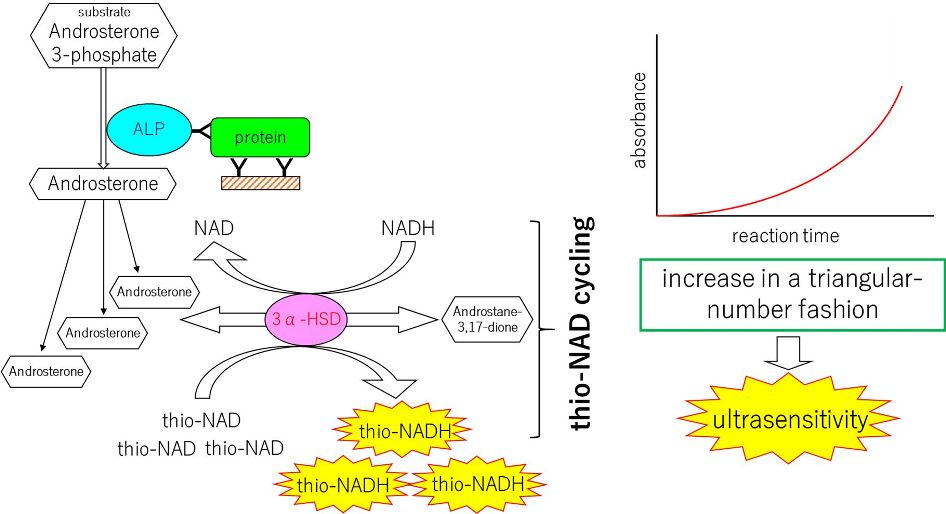For the diagnosis of disease, the ability to quantitatively detect trace amounts of the causal proteins from bacteria/viruses as biomarkers in patient specimens is highly desirable. Here we introduce a simple, rapid, and colorimetric assay as a de novo, ultrasensitive detection method. This ultrasensitive assay consists of sandwich enzyme-linked immunosorbent assay (ELISA) and thionicotinamide-adenine dinucleotide (thio-NAD) cycling, forming an ultrasensitive ELISA, in which the signal substrate (i.e., thio-NADH) accumulates in a triangular manner, and the accumulated thio-NADH is measured at its maximum absorption wavelength of 400 nm. We have successfully achieved a limit of detection of ca. 10–18 moles/assay for a target protein. As an example of infectious disease detection, HIV-1 p24 could be measured at 0.0065 IU/assay (i.e., 10−18 moles/assay), and as a marker for a lifestyle-related disease, adiponectin could be detected at 2.3 × 10−19 moles/assay. In particular, despite the long-held belief that the trace amounts of adiponectin in urine can only be detected using a radioisotope, our ultrasensitive ELISA was able to detect urinary adiponectin. This method is highly versatile, because simply changing the antibody enables the detection of various proteins. This assay system requires only the measurement of absorbance, thus it requires equipment that is easily obtained by medical facilities, which facilitates diagnosis in hospitals and clinics. Moreover, we describe an expansion of our ultrasensitive ELISA to a non-amplification nucleic acid detection method for nucleic acids using hybridization. These de novo methods will enable simple, rapid, and accurate diagnosis.

